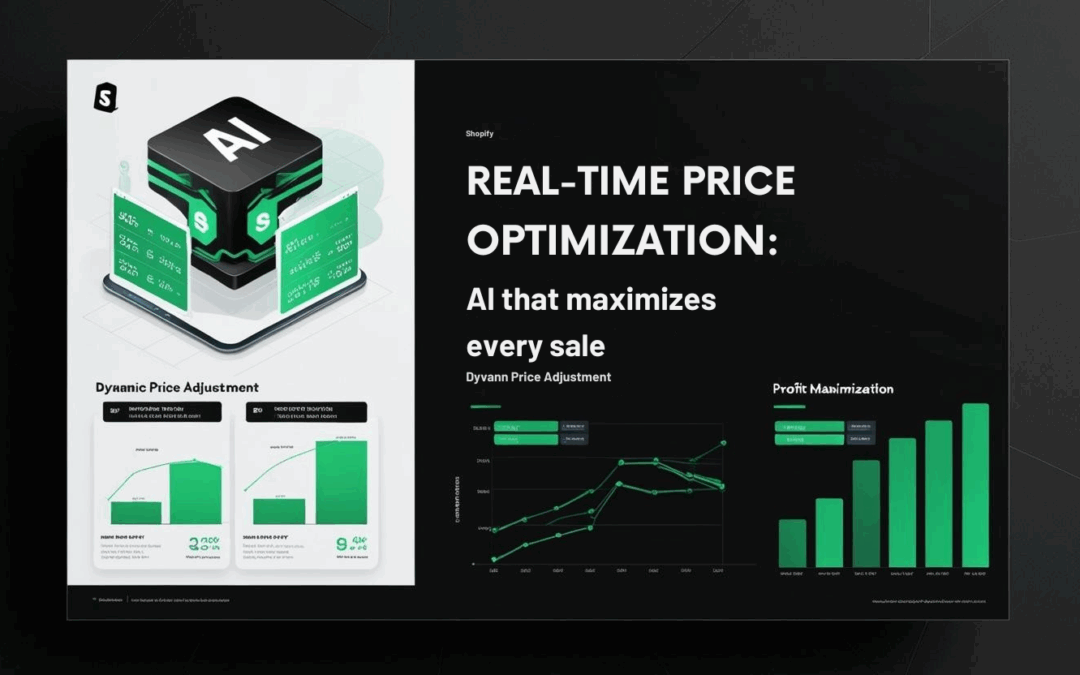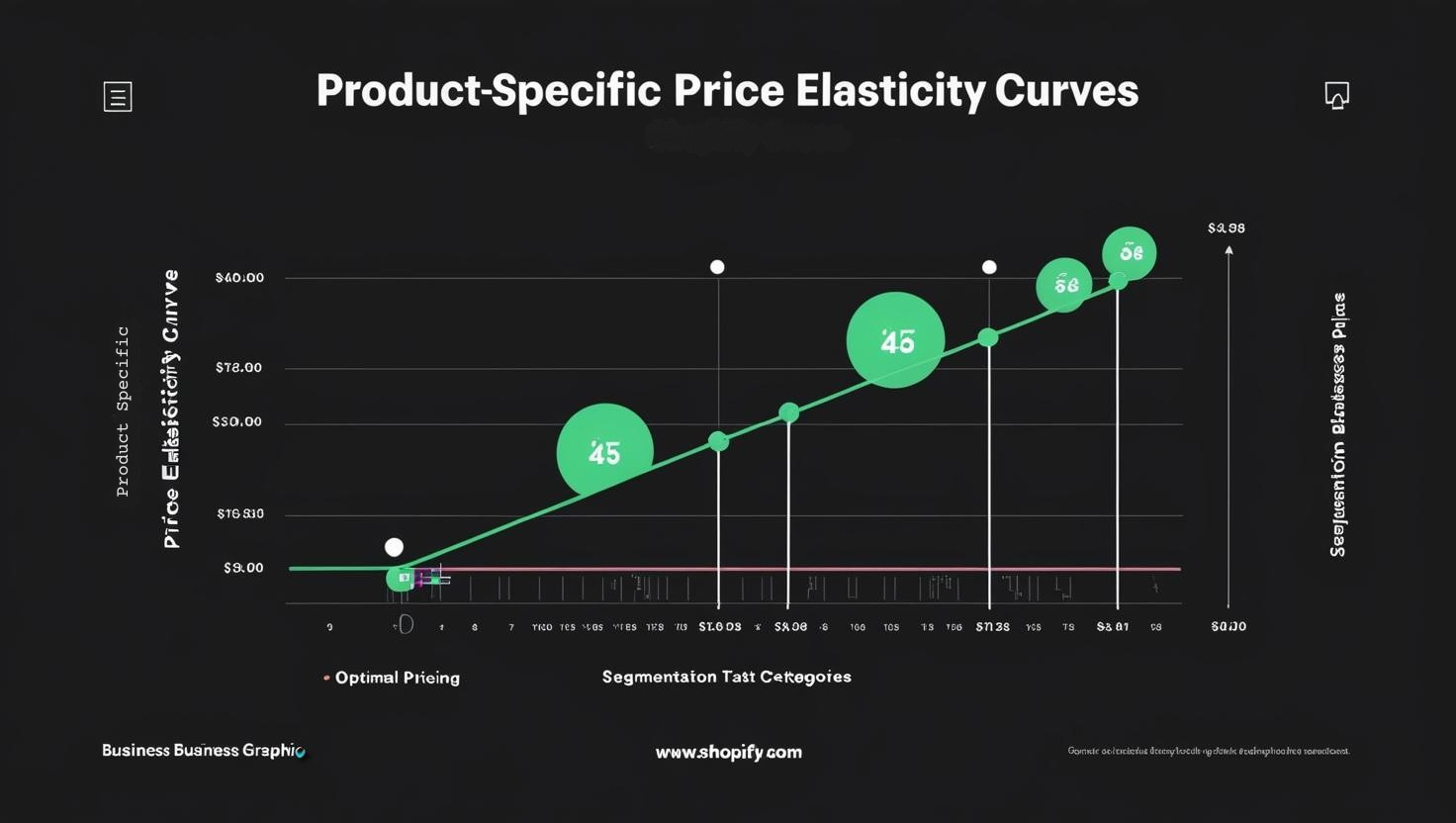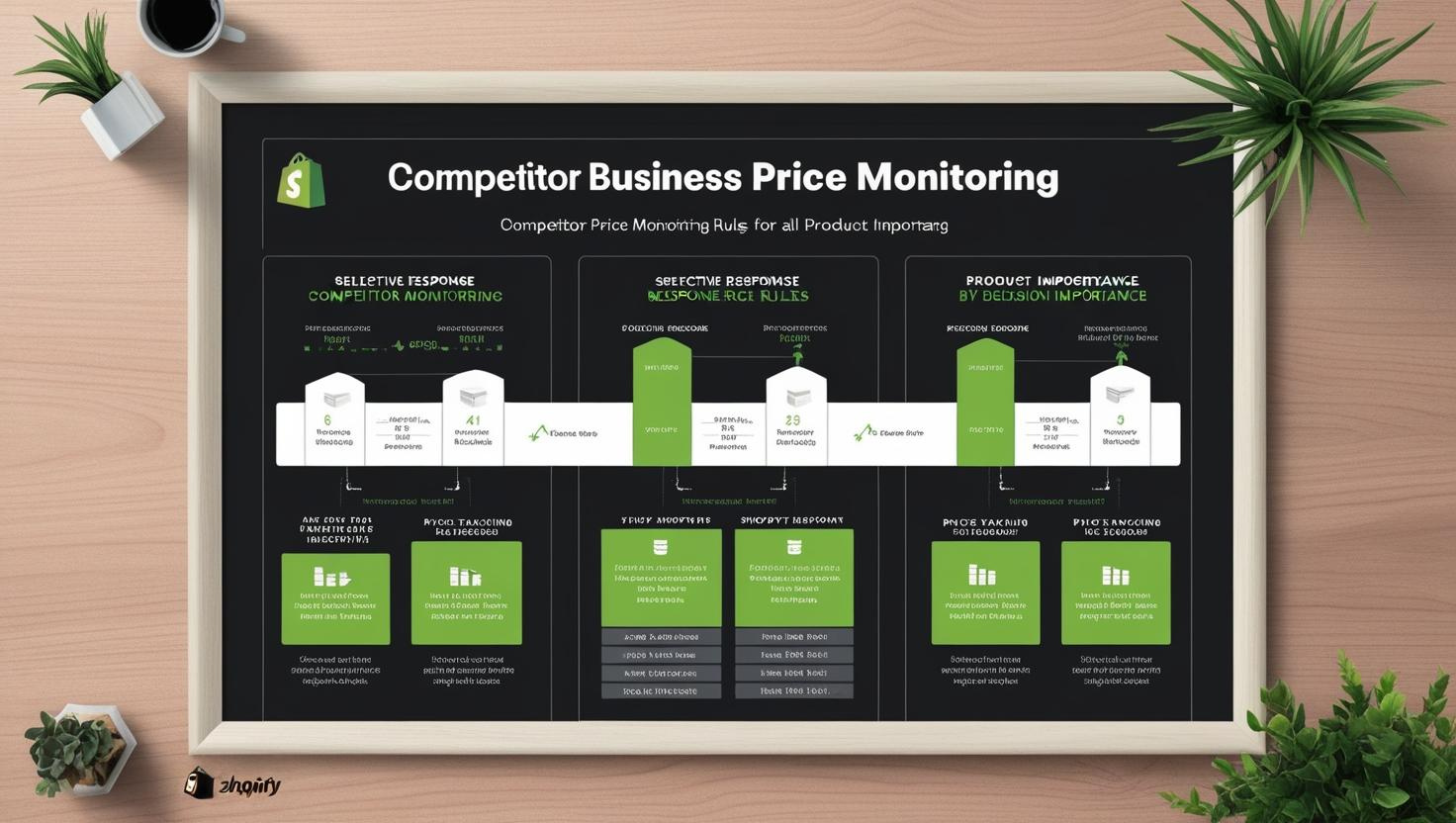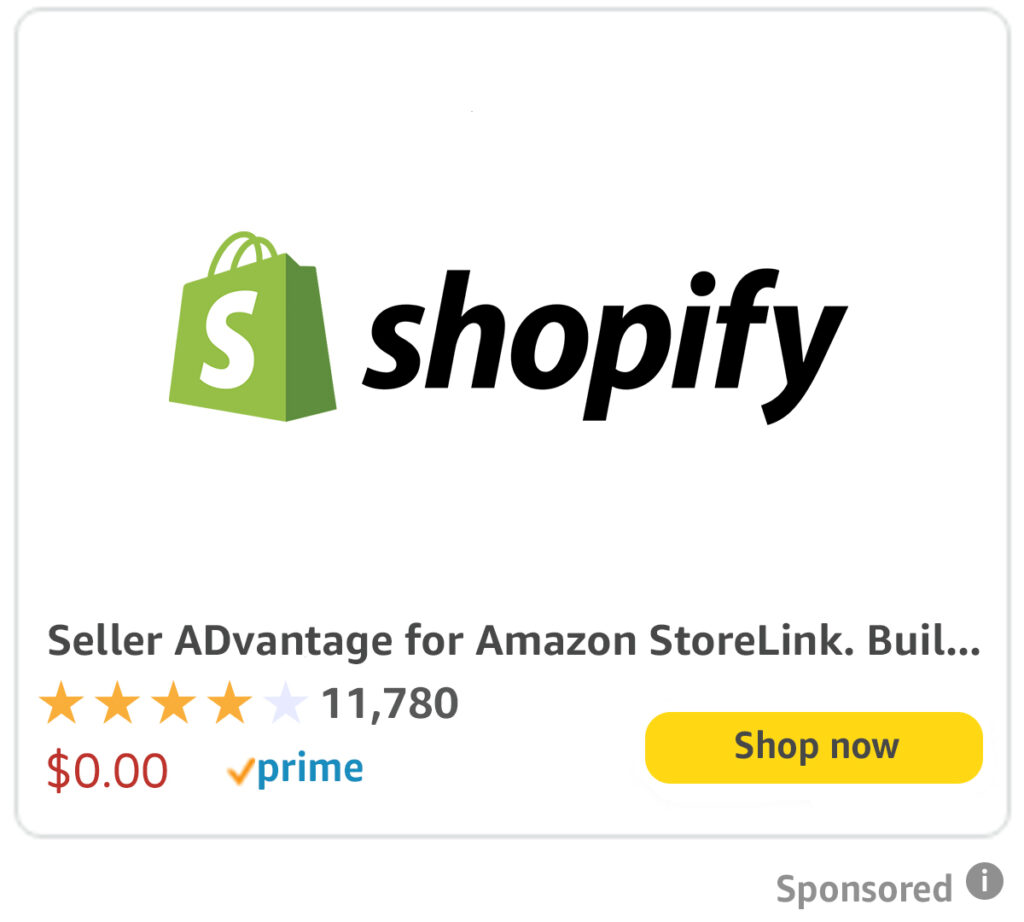Read More
Step-by-Step on SellerADvantage.co.uk
Read on LinkedIn
Read on Medium
Watch on YouTube
Real-Time Price Optimization: AI That Maximizes Every Sale
Introduction
In today’s hyper-competitive e-commerce landscape, pricing strategy has evolved far beyond simple cost-plus calculations or competitor matching. Modern Shopify store owners face unprecedented pricing complexity: they must simultaneously maximize margins, remain competitive, respond to market fluctuations, and meet customer value expectations—all while managing increasingly dynamic product catalogs. Traditional static pricing approaches force merchants to choose between profit maximization and market competitiveness, often resulting in suboptimal outcomes as market conditions change between manual price updates. This is where AI-powered real-time price optimization represents a revolutionary advancement, enabling Shopify merchants to implement sophisticated, dynamic pricing strategies previously available only to enterprise-level retailers. Rather than setting fixed prices, these systems continuously analyze dozens of variables—including competitor pricing, inventory levels, demand patterns, customer segments, and even external factors like weather or events—to automatically adjust prices for maximum profitability at every moment.
The business impact of AI-powered pricing is substantial and increasingly well-documented. Studies consistently show that sophisticated price optimization typically increases profit margins by 5-15% while simultaneously growing revenue by 3-7%—improvements that flow directly to bottom-line profitability without requiring additional traffic or operational changes. These gains stem from the AI’s ability to identify precise price elasticity for individual products and customer segments, revealing opportunities to increase prices on less elastic items while strategically lowering prices where elasticity is higher to drive volume. Furthermore, dynamic pricing systems automatically capture value during periods of high demand or low competition that would be missed with static pricing approaches. Perhaps most importantly, these systems can detect and respond to market changes within minutes rather than days or weeks, ensuring your pricing remains optimal regardless of competitor actions, supply chain disruptions, or demand fluctuations. For Shopify merchants operating on slim margins or in highly competitive categories, this continuous optimization can represent the difference between thriving and merely surviving.
What makes today’s AI pricing technology particularly remarkable is its accessibility and sophistication compared to earlier generations of pricing software. Advanced machine learning algorithms can now identify complex pricing patterns and relationships that would be impossible for human analysts to detect, processing thousands of data points simultaneously to make nuanced pricing decisions. These systems continuously learn and improve, adapting to your specific business context and refining their understanding of your unique price elasticity curves over time. Equally important, the technology has been democratized through purpose-built Shopify applications requiring minimal technical expertise to implement and operate effectively. This technological maturation means Shopify merchants can now deploy pricing strategies of similar sophistication to major retailers like Amazon and Walmart, without requiring dedicated data science teams or massive technology investments. The result is a more level competitive playing field where strategic pricing intelligence, rather than simply scale, can drive competitive advantage.
Key Action Points
1. Implement Product-Specific Elasticity Modeling and Segmentation
The foundation of effective price optimization lies in understanding precisely how price changes affect demand for each specific product in your catalog. Traditional pricing approaches often treat entire categories or even whole catalogs with similar elasticity assumptions, missing the dramatic variations that exist between individual products. Advanced AI systems use sophisticated regression analysis and machine learning to develop product-specific elasticity models that capture these nuances, revealing which products can sustain higher margins and which require more competitive pricing to drive volume. These models incorporate dozens of variables beyond simple price-volume relationships, including cross-product elasticity effects (how price changes on one product affect demand for others), time-based elasticity variations (how sensitivity changes during different seasons or times of day), and customer segment elasticity differences (how price sensitivity varies across different customer types).
Implementation begins with ensuring your store captures and integrates the necessary data sources for accurate modeling. Configure your analytics to track not just purchases but also detail page views, cart additions, and abandonment rates at the product level to provide visibility into the consideration phase of the purchase journey. Integrate competitor price monitoring to establish relative price positioning data for elasticity analysis. Once data foundations are established, deploy machine learning algorithms specifically designed for e-commerce elasticity modeling, ideally leveraging Bayesian approaches that perform well with limited historical data for new products. Develop a robust product segmentation framework that classifies items based on multiple factors including margin contribution, competitive intensity, inventory position, and strategic importance. This segmentation will guide your optimization rules, allowing different approaches for flagship products versus long-tail items, high-margin versus traffic-driving products, and new launches versus mature offerings.
The operational impact of sophisticated elasticity modeling extends far beyond simple price adjustments. Merchants implementing advanced elasticity approaches typically identify 15-25% of products where prices can be increased with minimal volume impact, generating immediate margin improvements. Simultaneously, they discover 10-20% of catalog items where strategic price reductions drive sufficient volume increases to improve overall margin contribution despite lower per-unit margins. Perhaps most valuable are the insights around cross-product elasticity relationships, which reveal optimal pricing strategies for complementary products and bundles. Properly executed elasticity-based pricing typically results in overall margin improvements of 4-9% while maintaining or even increasing total sales volume—a win-win outcome that static pricing approaches simply cannot achieve as they force unnecessary tradeoffs between margin and competitiveness.
2. Deploy Dynamic Competitive Response Frameworks
While elasticity modeling provides the foundation for price optimization, competitive positioning represents an equally crucial dimension that requires sophisticated management. Traditional approaches to competitive pricing often oscillate between rigid margin requirements that ignore market realities and reactive price matching that erodes profitability. Dynamic competitive response frameworks transcend this false dichotomy by implementing nuanced rules that intelligently respond to competitor price changes based on multiple factors. These systems continuously monitor competitor pricing across your catalog, but rather than automatically matching all changes, they apply context-specific rules that consider factors like your current inventory position, the competitor’s significance in your specific market, historical pricing patterns suggesting whether changes are temporary promotions or permanent repositioning, and the strategic importance of each product to your overall business.
Implementation requires establishing a robust competitive intelligence layer that provides real-time visibility into market pricing. Select a competitive monitoring solution with comprehensive coverage of your specific competitors and seamless integration with your pricing optimization system. Develop a sophisticated rule framework that defines appropriate responses for different competitive scenarios, with specific thresholds and actions for various product segments. For example, you might configure the system to match price reductions on high-visibility, traffic-driving products from major competitors, but maintain margins on specialized or unique items regardless of competitor actions. Implement price-change verification protocols that prevent pricing errors or competitor manipulation, such as requiring human review for changes exceeding certain thresholds or detecting suspicious patterns that might indicate competitor pricing errors. Finally, establish comprehensive analytics to track the performance of your competitive response rules, continuously refining your approach based on actual business outcomes rather than assumptions about competitive dynamics.
The business impact of intelligent competitive positioning extends beyond immediate pricing optimization. Merchants implementing sophisticated competitive frameworks typically reduce profit-eroding price matches by 30-50% while maintaining market share, by selectively responding only to competitive changes that meaningfully impact customer purchase decisions. These systems also identify opportunities to strategically increase prices when competitors are stocked out or when your offering includes unique value-added features that justify premium positioning. Perhaps most importantly, dynamic competitive frameworks protect against “race to the bottom” pricing spirals by recognizing and avoiding response to temporary competitive promotions, focusing instead on sustainable pricing strategies aligned with long-term business objectives. The result is a more strategic approach to competition that maintains appropriate market positioning while preserving margins where possible—essentially competing smarter rather than simply competing on price.
3. Implement Personalized Pricing and Promotion Strategies
The most sophisticated application of AI-powered pricing moves beyond one-size-fits-all approaches to implement targeted pricing and promotion strategies tailored to specific customer segments or even individual customers. This approach recognizes that price sensitivity varies dramatically across different customer types, with factors like purchase history, brand loyalty, geographic location, device type, and shopping behavior all influencing willingness to pay. By leveraging these insights, merchants can present different promotional offers to different customers based on their specific price sensitivity, maximizing conversion rates while preserving margins where possible. Modern AI systems can analyze dozens of customer attributes to predict price sensitivity with remarkable accuracy, allowing for highly effective segmentation that drives both immediate conversion improvements and long-term customer value optimization.
Implementation begins with robust customer segmentation based on observed behaviors and attributes that correlate with price sensitivity. Configure your AI system to identify key customer segments like price-conscious new visitors, loyal repeat customers, bulk buyers, luxury shoppers, and deal seekers based on behavioral patterns. Develop targeted promotional strategies for each segment, such as free shipping thresholds for high-potential new customers, loyalty pricing for valuable repeat purchasers, or volume discounts for bulk buyers. Deploy these segmented offers through personalized on-site messaging, targeted email campaigns, and customized landing pages. For maximum effectiveness, implement real-time offer optimization that continuously tests different promotional approaches for each segment, automatically shifting budget toward the highest-performing offers for each customer type based on actual conversion data rather than assumptions about promotional effectiveness.
The conversion impact of personalized pricing strategies is substantial and directly measurable. Merchants implementing sophisticated customer-specific approaches typically see 15-25% higher promotion conversion rates compared to blanket discounting, as offers are aligned with specific customer motivations rather than generic price reductions. Average order values increase by 10-20% through strategically designed threshold promotions that encourage incremental purchases from each customer segment. Perhaps most significantly, overall promotion costs decrease by 20-35% while driving higher sales, as discounts are presented only to customers who require them for conversion rather than unnecessarily reducing margins on sales that would have occurred at full price. These efficiency gains stem from the elimination of promotional waste—the all-too-common scenario where discounts are given to customers who would have purchased anyway, essentially leaving money on the table through untargeted promotional strategies.
Final Thoughts
The implementation of AI-powered price optimization represents more than a tactical enhancement—it constitutes a fundamental reimagining of pricing as a dynamic, data-driven function rather than a periodic administrative task. By shifting from static, manual pricing to continuous algorithmic optimization, Shopify merchants can unlock significant value that would otherwise be left unrealized through suboptimal pricing decisions. This transformation is particularly valuable in today’s volatile e-commerce environment, where supply chain disruptions, rapidly shifting consumer preferences, and aggressive competitive positioning create a landscape where pricing must be continuously recalibrated to remain optimal. Merchants who successfully implement sophisticated pricing intelligence gain the ability to respond to these changes in real-time, maintaining optimal positioning regardless of market turbulence while competitors remain locked into increasingly outdated static pricing approaches.
Looking ahead, pricing optimization capabilities will increasingly intersect with other emerging technologies to create even more sophisticated strategies. Integration with predictive inventory systems could enable dynamic pricing based on forecasted stock positions rather than current levels, proactively adjusting prices to smooth demand patterns. Advanced customer lifetime value models could inform acquisition pricing, willingly accepting lower margins on initial purchases from customers predicted to have high future value. Blockchain-based competitive intelligence networks could provide unprecedented visibility into market pricing across multiple channels simultaneously, enabling truly holistic optimization. These technological convergences will continuously expand the strategic potential of pricing intelligence, creating ongoing opportunities for innovation and differentiation among forward-thinking Shopify merchants.
The time for implementing sophisticated pricing capabilities is now, while the technology is mature enough to provide real value but still novel enough to create meaningful differentiation. Early adopters have the opportunity to establish significant competitive advantages in their market segments, capturing margin and market share that will be increasingly difficult for late-adopting competitors to reclaim once optimal pricing becomes the industry standard. By prioritizing the key action points outlined in this article—implementing product-specific elasticity modeling, deploying dynamic competitive response frameworks, and creating personalized pricing strategies—Shopify store owners can transform pricing from a periodic guessing game into a continuous value optimization engine. In an increasingly margin-pressured e-commerce landscape, this evolution from reactive to proactive pricing intelligence may well become the defining factor separating thriving businesses from those merely surviving on increasingly compressed margins.
Any follow helps us out a lot – Thank-You!
If you like this article and want to explore further insights, discuss collaborative opportunities, or simply connect, please feel free to reach out to me on any of the following :
Work With Us
Hire Us on fiverr
Hire Us on upwork
🔴Book a FREE PPC Audit🔴







